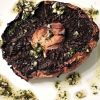Many foods now carry a label identifying them as sources of fiber or other substances that can lower the risk of heart disease or other health problems.
In approving such claims, the U.S. Food and Drug Administration (FDA) requires companies to clarify how a food offers benefits within an overall healthy diet.
But consumers may still miss the details and overestimate the impact of a particular food, especially with only occasional use.
For example, products containing at least 6.25 grams of soy protein in a standard serving are allowed to carry a health claim linking soy foods to a lower risk of heart disease.
This benefit has been demonstrated through studies in which 25 grams of soy protein are consumed daily and are part of a diet low in saturated fat and cholesterol. While research supports the potential benefit of soy protein and certain other foods as real, consumers still need to carefully read labels.
Otherwise, they may not understand that as much as four servings every day might be needed to achieve that benefit. Not only does that mean occasional use might not make a significant impact, it also means you can't expect a day's recommended amount to compensate for the fat and cholesterol intake of a supersized burger and fries.
Foods containing specific amounts of two particular kinds of dietary fiber have also received FDA approval to claim they will lower the risk of heart disease. The two specific fiber sources authorized for this claim are beta-glucan, found in oats and oat bran, and the husk or outer layer of the psyllium seed.
A food bearing this health claim must be a significant source, containing at least 0.75 gram of beta-glucan or 1.78 grams of psyllium husk per standard serving.
Furthermore, the FDA requires the food label to note that research links lowered risk of heart disease to the consumption of at least three grams of soluble fiber from oats, or at least seven grams of soluble fiber from psyllium husk each day.
As the label must explain, this means the benefits demonstrated in research may require four servings of these foods daily. Labels must also remind consumers that heart disease risks are lowered when these foods are used as part of a diet low in saturated fat and cholesterol.
Do consumers understand this? Or do they expect one bowl of cereal to meet the minimum required amount of one of these fibers to lower risk?
Another approved claim states that the risk of some cancers may be lowered by diets low in fat and high in the fiber found in grain products, fruits and vegetables. To carry this claim, a food must meet the legal definition for being low in fat and a good source of fiber.
The American Institute for Cancer Research emphasizes that healthy eating habits can substantially reduce our risk of many cancers. But it is not the addition or avoidance of any one food that protects us; it's the overall balance of foods in a plant-based diet of appropriate portion sizes.
Of course, that's what the food labels say. Yet how many consumers believe that a bowl of raisin bran cereal or a serving of broccoli is all that's needed to reduce their risk of cancer?
Health claims on food labels are not a problem. The FDA is quite careful in limiting claims to those that are supported by substantial research. And the labels require wording that shows how individual foods fit into an overall healthy diet.
Health claims can help us select a whole-grain bread, calcium-enriched juice or low-fat entree. We just need to remember that each healthy selection is just one puzzle piece in the overall picture of good health. One food can never complete the entire picture on its own.
AICR










